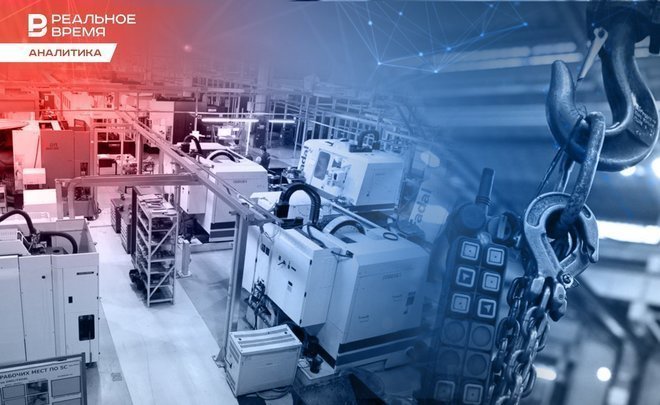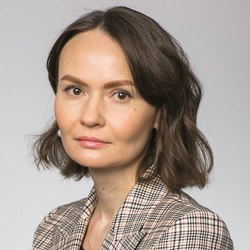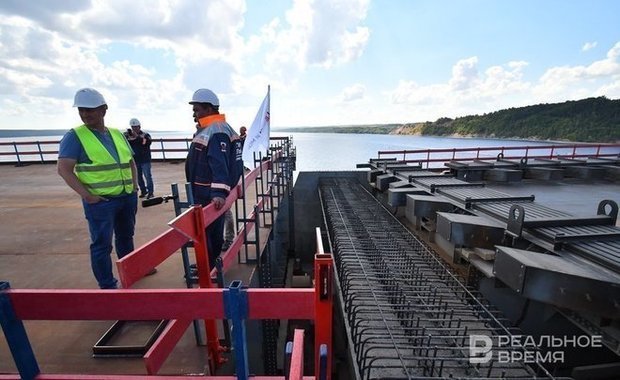Tatarstan’s economy grows on oil production and defense procurement
Meanwhile, mechanical engineering, textiles, and wood are among the leaders in reducing volumes

The main macroeconomic indicators are in the black: the turnover of Tatarstan organisations, construction and commissioning of housing, as well as the retail market and the volume of paid services have increased. The top industries that contribute to the development of industry in the republic include the production of computers and electronic products, electrical equipment and furniture. At the same time, wood processing, textile industry, and the production of machinery and equipment are declining. What trends influenced the economy in the first seven months of 2023 and analysts' forecasts — in the review of Realnoe Vremya.
Computers, furniture, and products
The industrial production index in Tatarstan in January-July 2023 amounted to 103,8%. The indicators that turned out to be in the negative zone — only the volume of shipped goods of own production, which decreased by 8,7% to 2,5 trillion rubles, and the turnover of motor vehicles (fell by 0,3%).
Basically, macroeconomic indicators showed growth. The turnover of organisations has increased by 2,8% to 5,6 trillion rubles. Agricultural production has increased by 7,2% to 137,2 billion rubles. Construction has increased by 22,1% to almost 282 billion rubles. At the same time, according to Tatarstan Statistics, the share of unprofitable enterprises is also decreasing.
Housing commissioning in the republic has increased by 15,3% to 2,5 million square metres. Retail trade turnover has increased by 8% to 755,6 billion rubles. The volume of paid services to the population has increased by 7,2% to 228,3 billion rubles.
The decline in industry was demonstrated by wood processing (78,1% compared to the level of January-July 2022), textile industry (85,7%), production of machinery and equipment (90,8%), chemical products (93,1%), production of other vehicles (95,4%), medicines and medical products (96,4%), production of leather (98,2%), as well as rubber and plastic products (99,3%).
The production of computers, electronic and optical products (163%), electrical equipment (136%), furniture (125%), motor vehicles (122%), metallurgical production (118%), clothing production (112,9%), food products (107,3%), manufacturing (105,7%), production of coke and petroleum products (104%), mining (101,1%) has increased.
Unemployment is at a low level. In July 2023, the number of registered unemployed amounted to 6,1 thousand people. The coefficient of tension in the labour market remains at the level of 0,2%.
“The growth of new orders in the sector has accelerated”

Industrialists expect a recovery in demand against the background of building relationships with new partners, and they also count on high demand in the domestic market, which will be formed by reducing competition from companies that have withdrawn from Russia, the expert says. Statistics for August confirmed market expectations — the growth of new orders in the sector accelerated to a three-month high, and significant support was provided by an increase in the number of new export orders.
“Despite the improved conditions in the sector, problematic areas remain — manufacturers record high growth rates of production costs due to the weakening of the ruble and delays in supplies. In the medium term, we should expect a moderate growth in industrial production," Pyrieva predicts.
The situation will be affected by the increase in oil prices and the weakening of the ruble

With the growth of the physical volume of industrial production, there was a decrease in the cost of industrial production. This was due to the fall in world prices for our export goods, as a result of which the cost of industrial production decreased, the economist explains. And in those regions that are tied to the export of fuel and energy products, the cost of industrial products has significantly decreased.
However, due to the fall in the ruble exchange rate and the increase in world oil prices in the second half of the year, the situation is going to change for the better for oil-producing regions.
What other trends have been observed in the economy?
The Bank of Russia has published a report on regional economies for seven months of 2023, according to which consumer activity, shopping center attendance, entertainment services and catering continue to grow in Tatarstan.
Out of the important industries in the republic, the Bank of Russia separately singled out tourism, mechanical engineering, logistics and agriculture. For example, 2,4 million people visited the republic in 7 months. In July alone — more than half a million. This is by 13,9% more than in July 2022. In July, the serial production of diesel engines started in Tatarstan at the plant in Alabuga SEZ. It is planned to localise all key technological operations on it.
Besides, the M12 highway is being built in Tatarstan: the section from Arzamas to Kazan will be opened by the end of the year, the press service of the Bank of Russia's Tatarstan branch says.

The growth of the region's economy is affected by the transfer of a significant part of consumption inside Russia, experts emphasise.
According to the operational assessment of the Ministry of Economic Development of Russia, in July, GDP growth with the exception of the seasonal factor accelerated to 0,5% compared to the previous month after an increase of 0,1% in June. In general, for seven months of 2023, GDP increased by 2,1%. Investment activity in the second quarter turned out to be significantly higher than expectations and forecast estimates. The total volume of investments in Russia amounts to 7 trillion rubles.